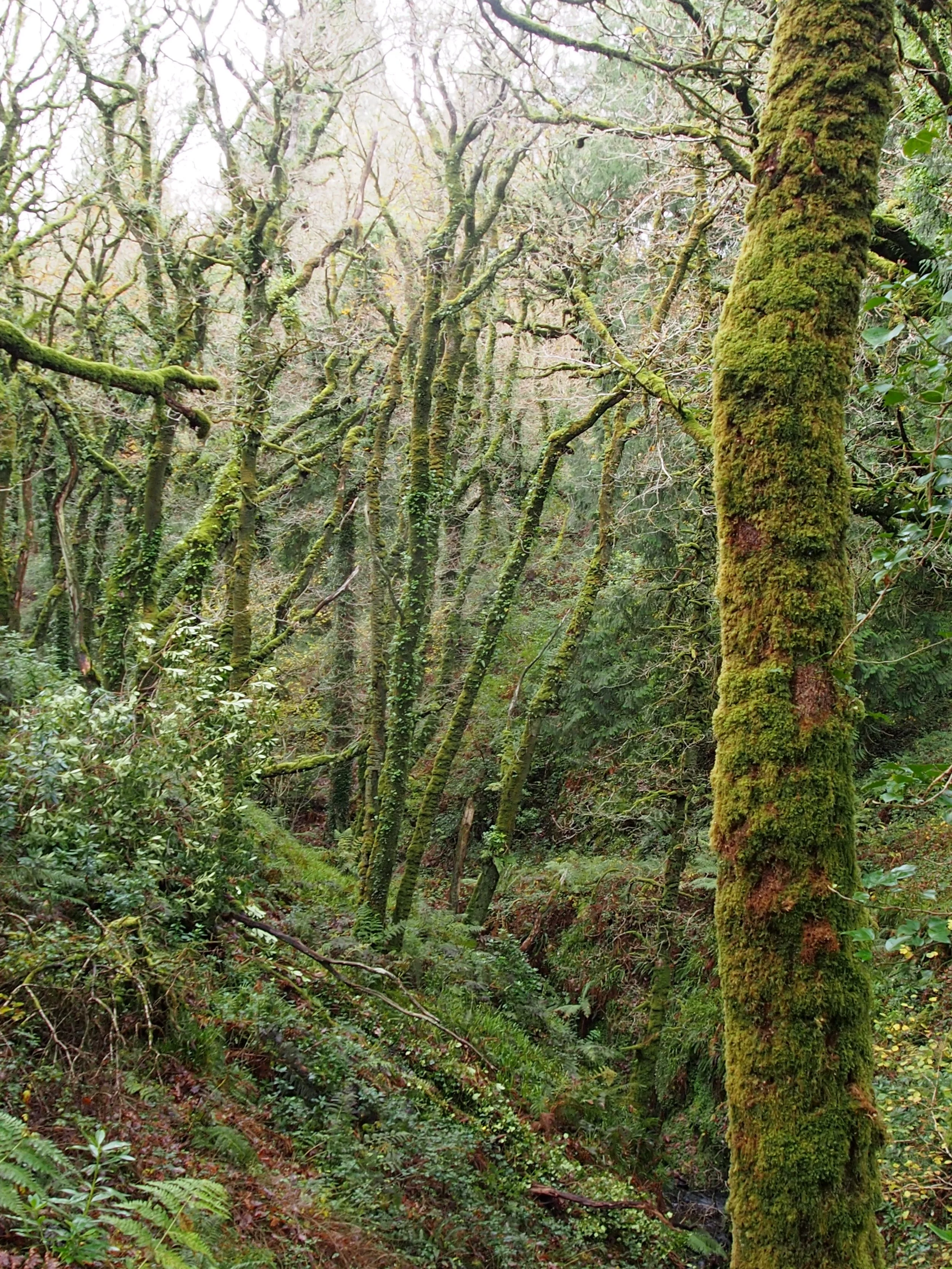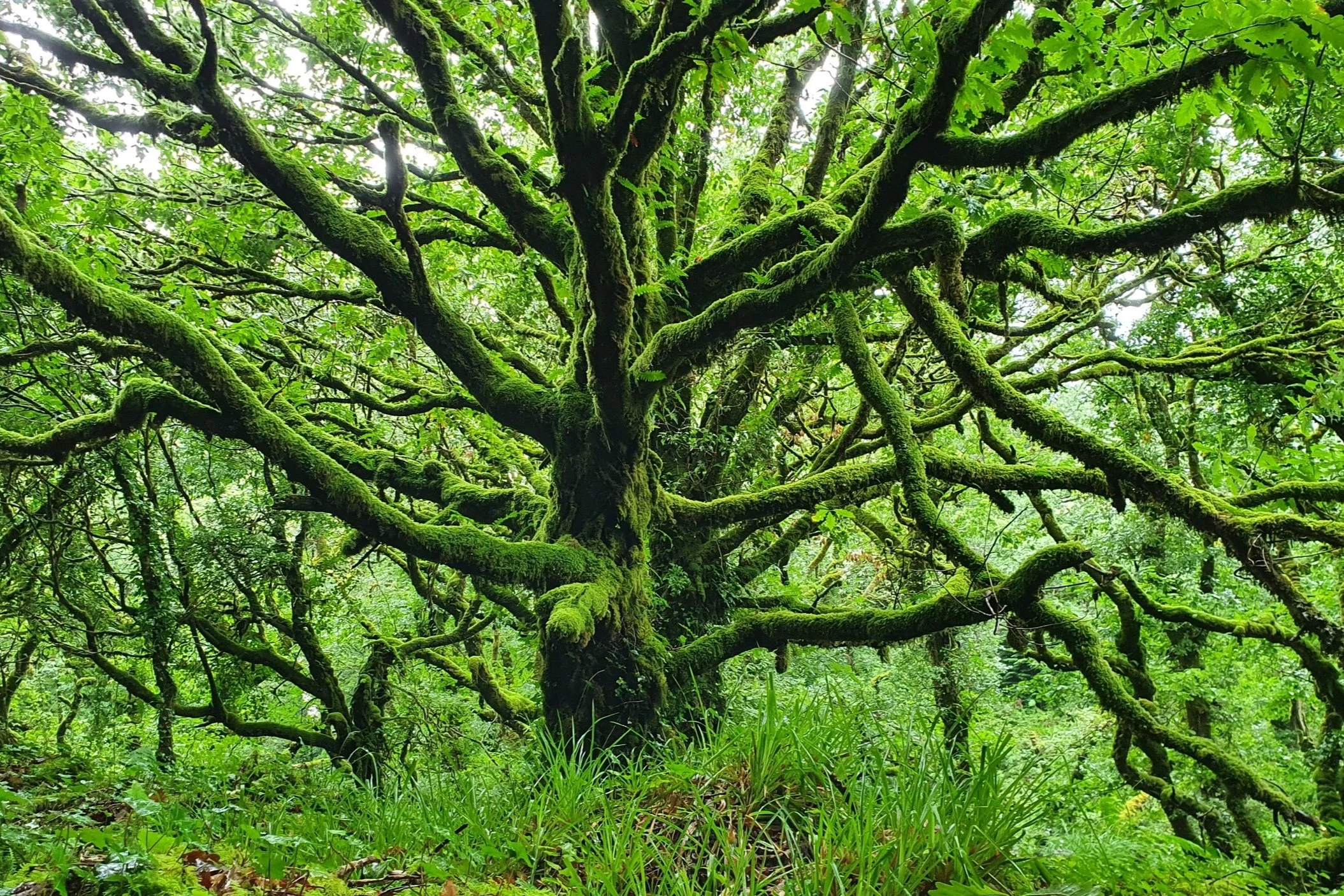Ireland’s Temperate Rainforests: What Makes a Woodland a Rainforest? by Dr Rory Hodd
Dr Rory Hodd is an independent ecologist and is recognised as a national bryophyte expert, having undertaken surveys of rare bryophytes listed on the Flora Protection Order (FPO) throughout Ireland. He also has considerable expertise on vascular plants and the full range of Irish habitats. He is one of the expert project advisors for the Wild Atlantic Rainforest Restoration Project.
When the word ‘rainforest’ is mentioned, it immediately conjures up an image of humid tropical jungles far from home, burgeoning with a dizzying abundance of life in all its forms and with an air of danger and otherness. In a temperate north-western European context, our peatlands have sometimes been referred to as the miniature, northern, version of the rainforest, but in fact Ireland is home to a habitat that ticks most of the boxes to be called a genuine rainforest.
Also known as oceanic woodland or Atlantic woodland, temperate rainforest is a very special kind of woodland that only grows in a very limited area where climatic conditions are ideal. As the term ‘rainforest’ implies, rain is the key factor, both in terms of amount and frequency. Typically, temperate rainforest grows in areas with an average annual rainfall of around 2000mm or more, with the frequency of this rainfall being of crucial importance. If all of the rain were to fall in a small number of intense events, suitable levels of humidity would not be consistently maintained. Small amounts of rain at regular intervals keeps the humidity consistently high and the best areas for the growth of temperate rainforest are where at least 1mm of rain falls on more than 200 days per year.
A further important factor is temperature, with ideal conditions being where temperatures are relatively constant throughout the year, averaging around 15°C, never too warm and never too cold, with frost a rare occurrence. This interaction of temperature and rainfall is known as oceanicity, which ranges from continental, where rainfall is infrequent, summers are warm and winters are cold, to hyperoceanic, where rainfall is frequent, summers are cool and winters are mild. Topography is also important in enhancing oceanicity on a local microclimatic level and humidity is increased and temperatures are moderated on north-facing slopes and in deep valleys, so that patches of temperate rainforest can occur locally in areas where the overall climate is not optimal for its growth.
Worldwide, temperate rainforest is widely distributed, but sparsely so, in the temperate zone of both the Northern and Southern Hemispheres, and at higher altitudes closer to the Equator. The majority of temperate rainforest occurs around the Pacific, in the Pacific Northwest of the USA and Canada, Japan, Taiwan, Patagonia, New Zealand and Tasmania. Along the coast of the Atlantic, temperate rainforest only occurs in Northwest Europe, in Southwest Norway, Western Britain, Ireland and Northwest Spain. Away from the oceanic fringes, areas of temperate rainforest occur mainly at moderate altitudes in mountain areas including the Himalaya, the Appalachians in the Eastern USA and in Australia, as well as around the Black and the Caspian Seas.
Within Ireland, temperate rainforest is scattered and highly fragmented, with few large, continuous areas. Conditions are most suitable for their growth along the western seaboard, but where local topographic conditions allow, pockets of rainforest can occur anywhere in the country, often as tiny patches where they have survived by chance. The greatest expanses of temperate rainforest occur in the Southwest, with notable examples including in the Killarney National Park, Uragh Wood and Glengarriff Woods. Scattered areas of temperate rainforest occur up the length of the west coast, with other important forests including the remaining fragments of the Great Forest of Aughty in Clare and Galway, Derryclare Wood in Galway, Oldhead Wood in Mayo and Ardnamona Wood and Glenveagh in Donegal, to name a few. In the east, Wicklow hosts a number of areas of temperate rainforest, including in the Glen of the Downs and the Vale of Clara. Temperate rainforest is harder to come by in the less topographically diverse, less humid and more intensively modified Midlands of Ireland, but even there, examples can be found.
Having said all that, what are the actual characteristics of a temperate rainforest? In reality, there are no set characteristics that make a woodland a rainforest, beyond the prevailing climatic conditions. However, these climatic conditions endow a very distinctive and special character to these forests. Typically, in Ireland, the dominant tree species is Sessile Oak (Quercus petraea), although Birch (Betula pubescens), Ash (Fraxinus excelsior) and Hazel (Corylus avellana) can also be dominant. Hazel, in particular, is an important species, forming relatively low-growing, monospecific stands on limestone pavement in the Burren and on slopes close to the coast. The classic stand of temperate rainforest would have a canopy of Sessile Oak, varying from low and wind-pruned to tall and broad-crowned, with an understory of Holly (Ilex aquifolium) and a ground layer including frequent Greater Wood Rush (Luzula sylvatica), Bilberry (Vaccinium myrtillus) and Hard Fern (Blechnum spicant), where overgrazing has not occurred. Usually, these woodlands have a floor with abundant rocks and boulders or occur on steep slopes with rocky outcrops. The most striking feature of temperate rainforests is the abundance and lushness of mosses, liverworts (collectively known as bryophytes) and ferns. Every rock and boulder is usually covered in a luxuriant, vibrant mat of mosses and liverworts or Filmy Ferns (Hymenophyllum species), as are the trunks and branches of the trees. Plants which grow on other plants are known as epiphytes, the presence of which is one of the main characteristics of temperate rainforest. It is not only mosses and liverworts that grow as epiphytes in temperate rainforest, but also a range of fern species and even young trees and shrubs. In the most humid places, this even goes a step further, with liverworts, and occasionally mosses, growing on the leaves of evergreen plants or the fronds of ferns, where they are known as epiphylls.
It’s not just the lushness of the growth of mosses, liverworts and ferns in temperate rainforests that is remarkable, but also the richness and diversity of species present. The most notable of these species are restricted in Europe to the oceanic fringes of Ireland and Britain and grow mainly in temperate rainforest habitat, growing elsewhere in tropical and subtropical forests thousands of kilometres to the south. This includes a number of liverworts, mosses and a fern species that is only found elsewhere in the Caribbean. A suite of rare lichens also grows in temperate rainforest, the most prominent and distinctive of which is the Lungwort (Lobaria pulmonaria), a species that can festoon branches where air quality is excellent. In essence, it is this abundance and diversity of lower plant life, brough about by specific climatic conditions, that defines Ireland’s temperate rainforest and makes it such an important habitat, in urgent need of conservation and restoration.





